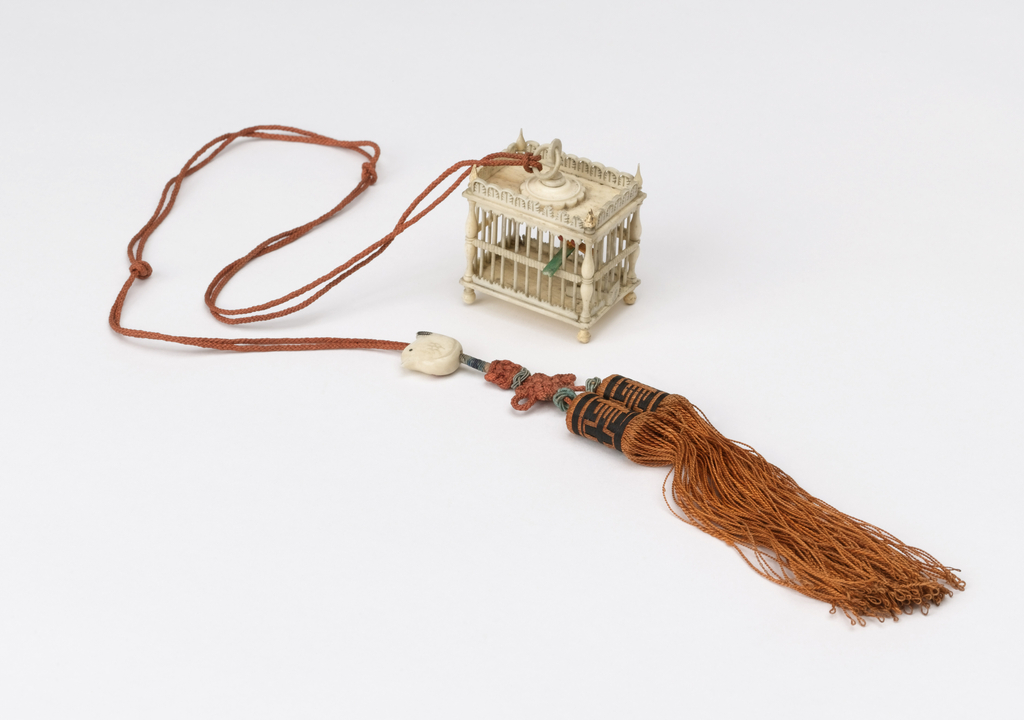This cricket cage is part of a group from Italy and Japan given to the Museum by the Hewitt sisters, demonstrating their eccentric taste. There is a longstanding appreciation in Japan and Asia of singing insects, such as cicadas and crickets. The custom of visiting places known for the abundance and quality of singing insects has been a treasured seasonal pleasure in Japan, akin to the viewing of cherry blossoms. Among the most valued of crickets was the kirigirisu, esteemed for its rhythmic chirp and as a harbinger of frost. Various forms of containers, including ornate cages made of precious or semi-precious materials, simple bamboo cubes, and miniature ceramic pots, were fabricated to house these insects.
This rectangular cage, thought to be from Japan, is made of ivory, with many architectural details, such as turned corner posts terminating in pointed finials and a pierced gallery around the top edge. Two red and orange birds made of ivory sit on a flat green perch suspended in the cage. A long orange silk cord attached to a ring at the top of the cage is decorated with a flat ivory bird, and further embellished by orange and silk knots and an orange and black banded tassel.
